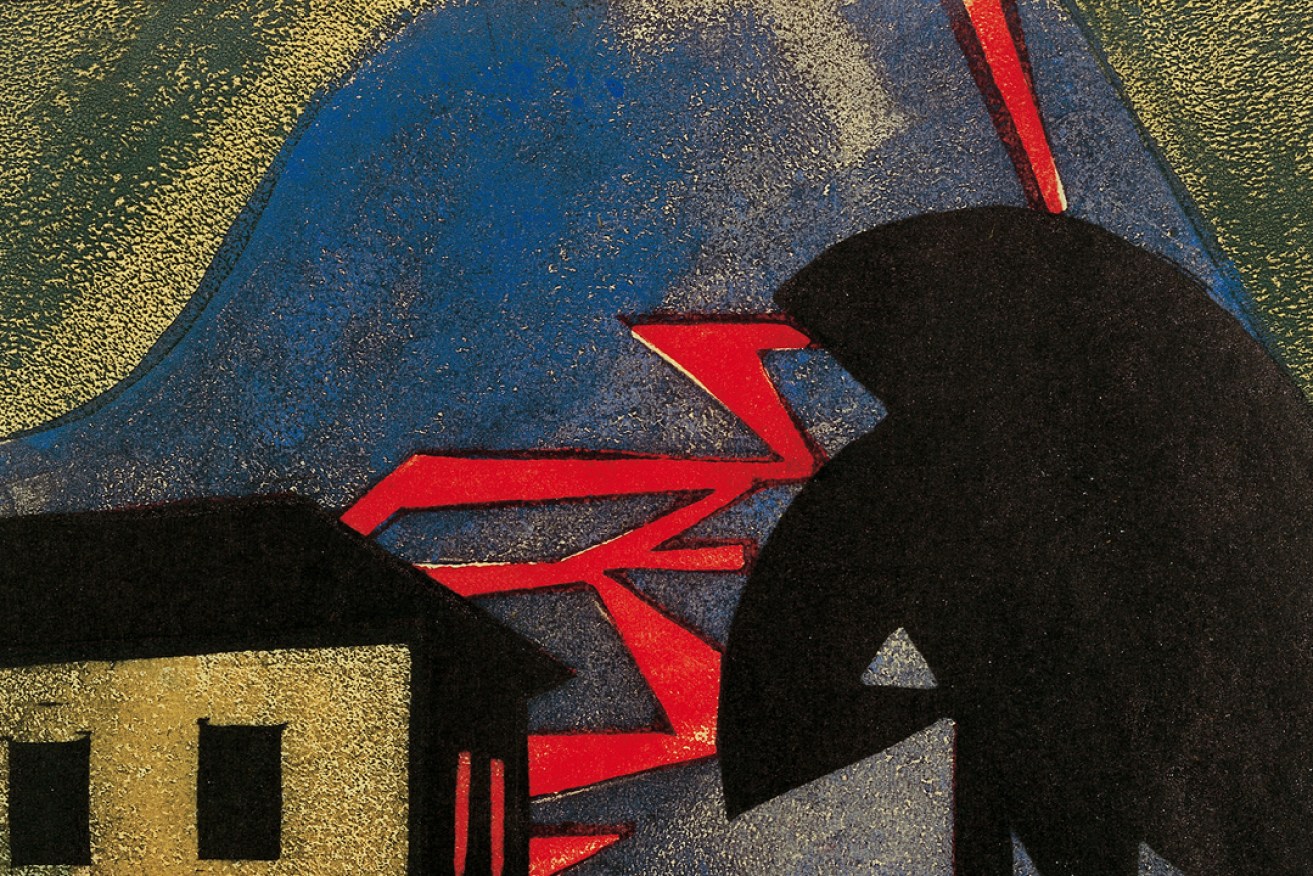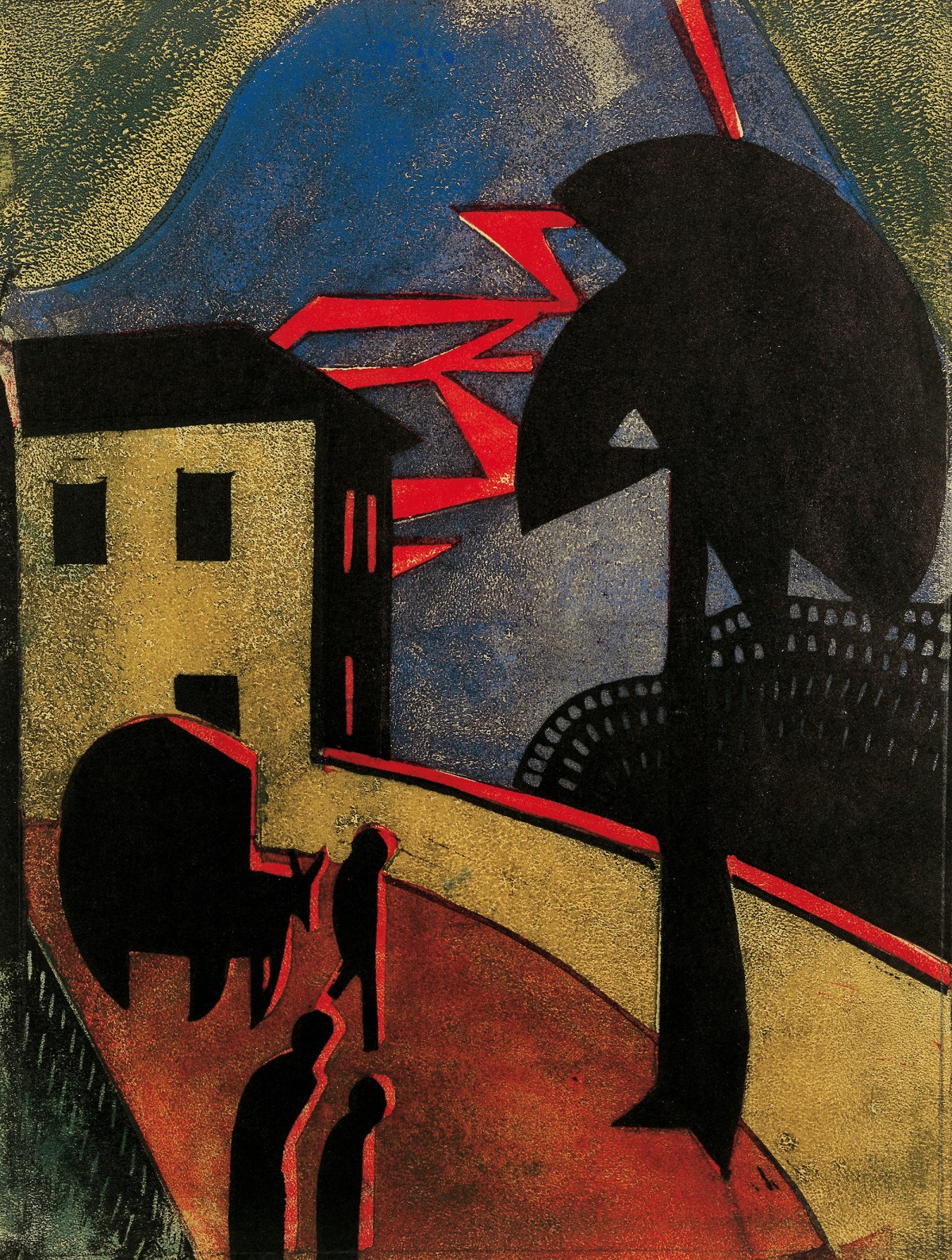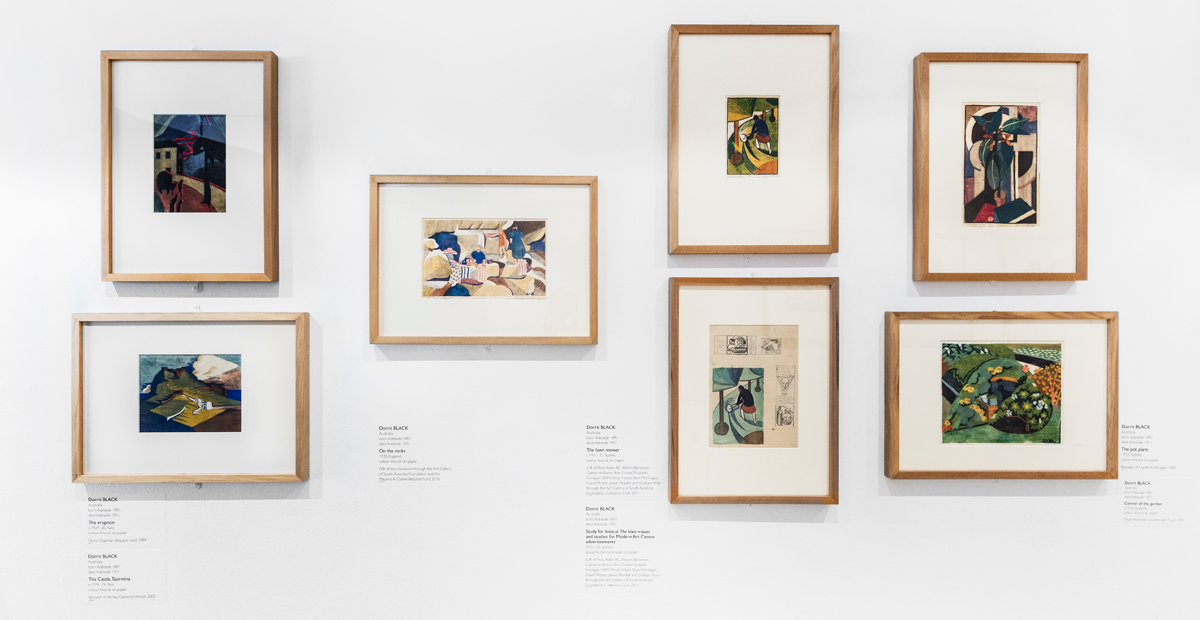Off the Wall: ‘A dramatic and terrible spectacle’
Adelaide-born artist Dorrit Black witnessed first-hand the destructive eruption of Sicily’s Mount Etna in 1928, and her resulting work The Eruption is a highlight of a new display of her linocut prints at the Art Gallery of SA.

Detail of The Eruption, by Dorrit Black.
With the subject given renewed resonance by the recent activity of Bali’s Mount Agung volcano, The Eruption (1929–30) is one of Dorrit Black’s most famous and coveted works.
It was inspired by Mount Etna’s most destructive eruption in nearly 300 years, which Black saw while travelling in Sicily in 1928. The verticality of the image crystallises her sense of awe as an eyewitness to the obliteration of a village by the lava flow.
She wrote at the time: “A very dramatic and terrible spectacle … there seemed to be a malevolent purpose about its slow, pushing, rustling, irresistible approach”.
Born in Adelaide in 1891, Black is considered to have been one of Australia’s leading modernist artists.
She spent three years in London and Paris in the late 1920s and received her most extensive training in the art of the colour linocut at the Grosvenor School of Modern Art in London in 1927, just two years before creating The Eruption. At the Grosvenor School, she was taught by British-born artist Claude Flight, who was influenced by Italian Futurism’s wholehearted embrace of the speed and dynamism of the new machine age, as well as the abstraction of British Vorticism, a short-lived radical art movement which focussed on rhythmic lines and geometric forms.
In The Eruption, Black adheres to Flight’s desire to represent the rather intangible qualities of energy, including motion, heat, light and sound. As he had suggested in a letter to her in 1928: “Abstract ideas work better in linocuts than definitive views.”

Dorrit Black, Australia, 1891‑1951, The eruption, c.1929‑30, Paris, colour linocut on paper, 25.3 x 18.7cm; Dora Chapman Bequest Fund 1999, Art Gallery of SA.
Black has deliberately suggested the looming proximity of the mountain by using the framing edge to closely crop its summit. She further intensifies the scene by adding sharply angled slashes of red-hot molten rock that animate the nocturnal background. This cleverly doubles as though it is lightning, striking the village and its figures.
The simplicity of form in The Eruption also reveals Black’s interest in Japanese aesthetics, which influenced modern art and design in Europe at the turn of the 20th century. Here, she applies the characteristic elements of Japanese woodblock prints, including a vertical pictorial format, an asymmetrical composition, shallow foreground and flat decorative motifs.
Although Black produced only 50 linocut prints, this printmaking technique saw her create her most powerful and sophisticated images, including The Eruption.

Installation view, Dorrit Black: Linocuts, Art Gallery of SA.
After returning to Australia in 1929, she established the Modern Art Centre in Sydney and then six years later moved back to Adelaide, where she was active in the local art scene until her death in a car accident in 1951.

Artist Dorrit Black.
The Eruption and a wider selection of Dorrit Black’s colour linocut prints is currently on display in the Art Gallery of SA’s Atrium. The display has been assembled to celebrate the forthcoming launch of the second edition of the gallery’s publication, Dorrit Black: unseen forces.
Tracey Lock is curator of Australian paintings and sculpture and Elle Freak is assistant curator of Australian paintings and sculpture at the Art Gallery of SA.
This article is the latest in a regular series, Off the Wall, highlighting the Art Gallery of South Australia’s treasures.




